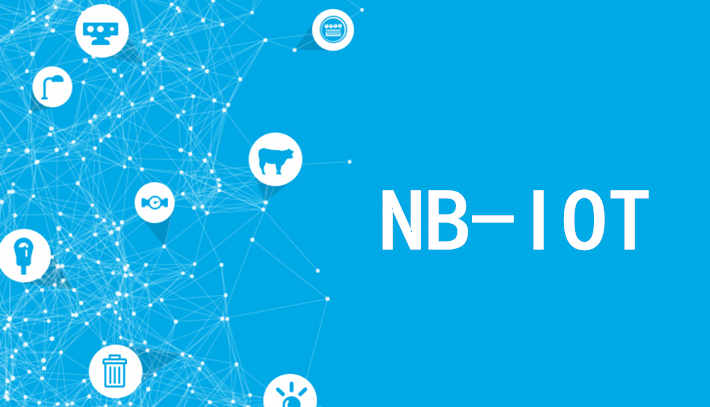The full name of NB-IoT is Narrow Band-Internet of Things. It is a narrowband Internet of Things technology based on cellular networks. It focuses on low-power wide area networks and supports cellular data connections of Internet of Things devices in wide area networks. It can be directly deployed with LTE networks and can reduce costs. Deployment costs and smooth upgrades are an IoT technology that can be widely used around the world. Its characteristics can be summarized as: wide coverage, low power consumption, low cost, large connections, etc.


NB-IOT is based on the international standard defined by the 3GPP organization and can be deployed globally. Based on the operation of licensed spectrum, NB-IOT technology comes from the joint efforts of telecom operators, communication equipment manufacturers and chip designers. In the early days, Huawei and Vodafone dominate NB-M2M technology, Qualcomm and others jointly dominate NB-CIOT technology, and MTK and others dominate NB-LTE technology. Among them, there are large differences between NB-LTE and NB-CIOT, and the terminal cannot smooth Upgrading, related non-standard base stations also have the risk of being disconnected from the network. Finally, starting from the overall situation, we integrated NB-CIOT, NB-LTE and other related technologies, and finally formed the NB-IOT international standard. The completion of the standardization work has enabled global operators to have a proprietary protocol for the Internet of Things based on standardization. It also marks that NB-IOT has entered the modular commercial stage. It will be low-cost and low-speed in the node period before 5G commercialization and in the future after 5G commercialization. market, NB-IOT will have a lot of space.
How to deploy the Internet of Things
1. Stand alone operation
It is suitable for use in the GSM frequency band. The channel bandwidth of GSM is 200KHz, which just makes room for the NB-IoT 180KHz bandwidth, and there is a 10KHz guard interval on both sides.
2. Guard band operation
Utilize unused resource blocks of 180KHz bandwidth in the LTE edge guard band.
3. In-band operation
Utilize any resource blocks in the middle of the LTE carrier.
NB-IoT occupies 180KHz bandwidth, which is the same as the bandwidth of one resource block in the LTE frame structure. Therefore, the above three deployment methods are possible.
Composition of NB-IOT network
1. Core network
In order to send IoT data to applications, Cellular Internet of Things (CIoT) defines two optimization solutions in EPS: They are as follows:
CIoT EPS user plane function optimization (User Plane CIoT EPS optimisation)
CIoT EPS control plane function optimization (Control Plane CIoT EPS optimisation)
For the optimization of CIoT EPS user plane functions, the IoT data transmission method is the same as traditional data traffic. Data is sent on the wireless bearer and transmitted from SGW to PGW and then to the application server. Therefore, this scheme incurs additional overhead when establishing the connection, but has the advantage of faster packet sequence delivery. This solution supports IP data and non-IP data transmission.
For CIoT EPS control plane function optimization, uplink data is transmitted from eNB (CIoT RAN) to MME, where the transmission path is divided into two branches: either through SGW to PGW and then to the application server, or through SCEF (Service Capability Exposure Function) is connected to the application server (CIoT Services), which only supports non-IP data transfer. The downlink data transmission path is the same, but in the opposite direction. This solution is very suitable for the transmission of infrequent small data packets.
2. Access network
The access network architecture of NB-IoT is the same as that of LTE.
3. Frequency band
NB-IoT follows the frequency band numbers defined by LTE, and Release 13 specifies 14 frequency bands for NB-IoT.
NB-IOT application scenarios
As the Internet of Things technology continues to mature and the Internet of Things continues to be commercialized, due to its own characteristics, various application cases based on NB-IoT technology have gradually emerged in various fields. With the concept of smart cities, NB-IOT has also plays an important role in it.
1. Smart street lights


Every street light in the city should be controlled by an automated unit, with functions such as dimming according to the environment, remote control switching, parameter monitoring, and fault monitoring. Through the intelligent street light system, functions such as multi-point control, data collection, and other dynamic nodes can be carried out, thereby saving the comprehensive power consumption of urban street lights and saving manpower and material resources. and reduce maintenance costs.
2. Smart meter


NB-IOT technology will promote the rapid evolution of smart meters. These smart meters do not require any intermediary links in data transmission. They go directly from the meter to the data platform. All debugging is completely completed on the backend server, which facilitates direct control and tiered pricing. The key is that NB-IOT is an operational network based on operators. Its signal is more stable and reliable than small wireless. Lower power consumption.
3. Smart manhole cover


Through the built-in intelligent monitoring equipment, the platform can monitor the opening and closing status of manhole covers, water on the road above the well, and water levels below the well in real time, and conduct dynamic analysis. Once an abnormality or danger occurs, such as the manhole cover accidentally opening, the underground water level exceeding the warning value, etc., the platform will automatically send the alarm information to the management personnel so that they can quickly find the location of the problem manhole cover and deal with it in time to prevent safety accidents. In addition, in order to effectively protect the monitoring equipment, each smart manhole cover is also equipped with a smart lock, which cannot be opened by unauthorized personnel.
4. Smart buildings: smart locks


Through the “NB-IoT smart door lock cloud platform big data”, it effectively solves many difficulties and pain points in apartment management. Tenants can enter personal identity information and fingerprint characteristics in one stop when checking in, and then the cloud platform uses the NB-IoT network and The encryption algorithm is sent to the smart lock that matches the rental contract. The tenant can unlock the lock with his or her ID card and fingerprint, and the unlocking record is synchronized to the cloud platform for enhanced management. The cloud platform also provides a variety of intelligent analysis tools and big data visualization tools, allowing managers to quickly manage all properties remotely.
The application industry of NB-IOT solutions and NB projects has become a global trend and has attracted widespread attention from more and more module manufacturers and solution design manufacturers. In the future, it will further develop in smart cities, smart transportation, environmentally friendly Internet of Things, agricultural Internet of Things, It will show its talents in fire protection Internet of Things and other industries.